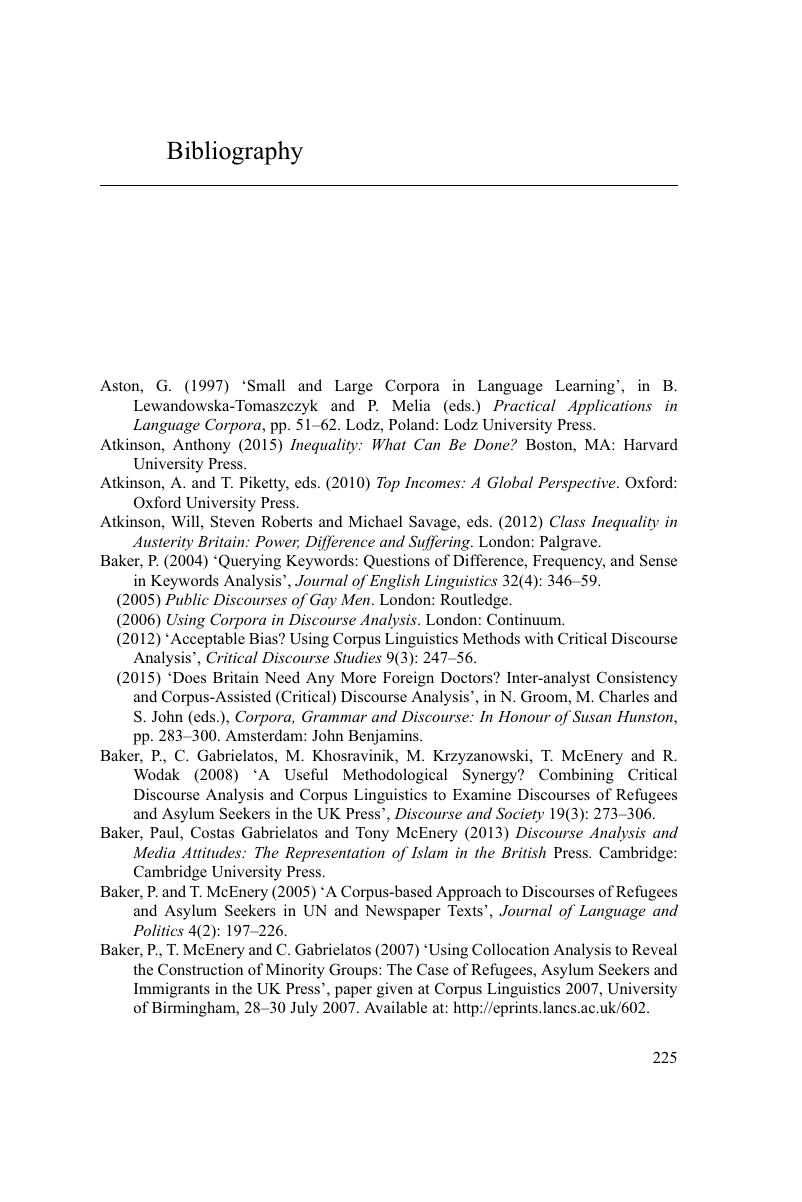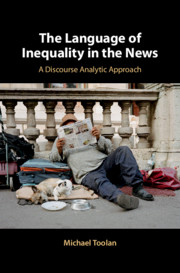Book contents
- The Language of Inequality in the News
- The Language of Inequality in the News
- Copyright page
- Contents
- Figures
- Tables
- Acknowledgements
- 1 Analysing the Evolving Press Discourse of Contemporary UK Inequality
- 2 What’s Fair and Unfair in The Times
- 3 Budgets and Burdens, from Barber to Osborne
- 4 Peter Black, Christopher Stevens, Class, Britain, and Last Night’s TV
- 5 Forty-Five Years of Luddite Behaviour
- 6 Forty-Five Years of Robin Hood
- 7 Conclusion
- Bibliography
- Index
- References
Bibliography
Published online by Cambridge University Press: 01 December 2018
- The Language of Inequality in the News
- The Language of Inequality in the News
- Copyright page
- Contents
- Figures
- Tables
- Acknowledgements
- 1 Analysing the Evolving Press Discourse of Contemporary UK Inequality
- 2 What’s Fair and Unfair in The Times
- 3 Budgets and Burdens, from Barber to Osborne
- 4 Peter Black, Christopher Stevens, Class, Britain, and Last Night’s TV
- 5 Forty-Five Years of Luddite Behaviour
- 6 Forty-Five Years of Robin Hood
- 7 Conclusion
- Bibliography
- Index
- References
Summary

- Type
- Chapter
- Information
- The Language of Inequality in the NewsA Discourse Analytic Approach, pp. 225 - 238Publisher: Cambridge University PressPrint publication year: 2018



